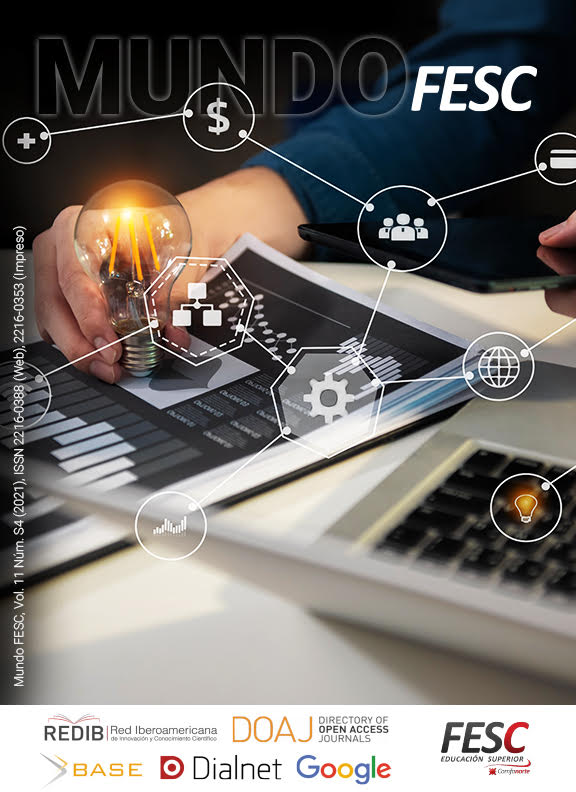Aplicación del modelo lean six sigma en instituciones de educación superior en el proceso de admisiones y matrículas: caso de estudio
DOI:
https://doi.org/10.61799/2216-0388.966Palabras clave:
calidad, instituciones de educación superior , lean six sigma, procesosResumen
Las instituciones de educación superior en búsqueda de la excelencia se han apoyado en la aplicación de herramientas para encontrar la mejora continua en las actividades y servicios que ofrecen. El modelo Lean Six Sigma para instituciones de educación superior se ha convertido en una opción que establece técnicas y herramientas para mejorar la calidad, eficiencia y eficacia de los procesos administrativos y académicos. Este artículo muestra la aplicación del modelo Lean Six Sigma para Instituciones de Educación Superior en la universidad caso de estudio en el proceso de expedición de constancias y certificados, donde se identificó que uno de los problemas que se presentaban con mayor frecuencia era el incumplimiento en el tiempo promedio de entrega de los certificados y/constancias al cliente. Los resultados de la aplicación permitieron identificar los cuellos de botella en el servicio, que a su vez se convirtieron en oportunidades de mejora y conllevaron a: establecer un instructivo para solicitar la expedición de constancias y certificados, crear un aplicativo en la página web para recibir pagos electrónicos mediante un sistema seguro y en línea, caracterizar el proceso en cuanto al flujo de información, aumentar la capacidad del proceso para alta demanda del servicio, asignar un responsable solo para la etapa de validación de pago y digitalizar todo el historial académico de egresados y estudiantes.
Descargas
Referencias
J. Bocanegra y D. Guerrero, “Memorias Congreso Internacional Industria y Organizaciones”, Congr. Int. Ind. y Organ., p. 210, 2017
J. I. Mesa-Mojica, H. F. Castro-Silva, y H. F. Salazar-Sanabria, "Modelos colaborativos para la gestión de inventarios múltiples. Aplicación en el sector artesanal colombiano", Mundo Fesc, vol. 11, n.º 21, pp. 96-109, ene. 2021
M. Haerizadeh and V. Sunder M, “Impacts of Lean Six Sigma on improving a higher education system: a case study”, Int. J. Qual. Reliab. Manag., vol. 36, no. 6, pp. 983–998, 2019, doi: 10.1108/IJQRM-07-2018-0198
C. ton Su, “Improving service quality by capitalising on an integrated Lean Six Sigma methodology Tai-Lin Chiang Che-Ming Chang”, vol. 2, no. 1, 2006
I. Alhuraish, C. Robledo, and A. Kobi, “A comparative exploration of lean manufacturing and six sigma in terms of their critical success factors”, J. Clean. Prod., vol. 164, pp. 325–337, 2017, doi: 10.1016/j.jclepro.2017.06.146
D. Nave, “How to compare Six Sigma, Lean and the Theory of Constraints”, Onde Electr., vol. 75, no. 2, pp. 6–10, 2002
R. Sundar, A. N. Balaji, and R. M. Satheesh Kumar, “A review on lean manufacturing implementation techniques”, Procedia Eng., vol. 97, pp. 1875–1885, 2014, doi: 10.1016/j.proeng.2014.12.341
N. Parikh, P. Gargollo, and C. Granberg, “Improving Operating Room Efficiency Using the Six Sigma Methodology”, Urology, vol. 154, pp. 141–147, Aug. 2021, doi: 10.1016/J.UROLOGY.2021.02.049
J. D. Hess and B. A. Benjamin, “Applying Lean Six Sigma within the university: opportunities for process improvement and cultural change”, Emerald Insight, vol. 6, p. 16, 2015
A. Cherrafi, S. Elfezazi, A. Chiarini, A. Mokhlis, and K. Benhida, “The integration of lean manufacturing, Six Sigma and sustainability: A literature review and future research directions for developing a specific model”, J. Clean. Prod., vol. 139, pp. 828–846, Dec. 2016, doi: 10.1016/J.JCLEPRO.2016.08.101
H. F. Castro-Silva, G. A. Rodríguez-Cañas, and H. H. López-Márquez, “Characterization of maturity in civil construction works in Colombia”, Respuestas, vol. 25, no. 2, pp. 65–74, 2020, doi: 10.22463/0122820x.2668
M. Smętkowska and B. Mrugalska, “Using Six Sigma DMAIC to Improve the Quality of the Production Process: A Case Study”, Procedia - Soc. Behav. Sci., vol. 238, pp. 590–596, 2018, doi: 10.1016/j.sbspro.2018.04.039
J. Albrecht, “GIS Project Management”, Compr. Geogr. Inf. Syst., vol. 3, pp. 446–477, Jan. 2018, doi: 10.1016/B978-0-12-409548-9.09612-3
S. Rueeker and M. Radzikowska, “The iterative design of a project charter for interdisciplinary research”, Proc. Conf. Des. Interact. Syst. Process. Pract. Methods, Tech. DIS, pp. 288–294, 2008, doi: 10.1145/1394445.1394476
J. Antony, “Lean Six Sigma for higher education”, Int. J. Product. Perform. Manag., vol. 66, no. 5, pp. 574–576, 2017, doi: 10.1108/IJPPM-03-2017-0063
J. Antony, N. Krishan, D. Cullen, and M. Kumar, “Lean Six Sigma for higher education institutions (HEIs)”, Int. J. Product. Perform. Manag., vol. 61, no. 8, pp. 940–948, 2012, doi: 10.1108/17410401211277165
C. M. Bowe, B. Gurney, J. Sloane, and C. Newlands, “Process mapping and Lean principles applied to orthognathic surgery”, Br. J. Oral Maxillofac. Surg., vol. 59, no. 2, pp. 157–162, Feb. 2021, doi: 10.1016/J.BJOMS.2020.07.046
H. Lee, J. Han, and Y. Suh, “Gift or threat? An examination of voice of the customer: The case of MyStarbucksIdea.com”, Electron. Commer. Res. Appl., vol. 13, no. 3, pp. 205–219, 2014, doi: 10.1016/j.elerap.2014.02.001
M. Luke and K. M. Goodrich, “Focus Group Research: An Intentional Strategy for Applied Group Research?”, J. Spec. Gr. Work, vol. 44, no. 2, pp. 77–81, 2019, doi: 10.1080/01933922.2019.1603741
K. Williamson, “Research techniques: Focus groups”, Res. Methods Students, Acad. Prof., pp. 251–264, Jan. 2002, doi: 10.1016/B978-1-876938-42-0.50024-1
S. Kundgol, P. Petkar, and V. N. Gaitonde, “Implementation of value stream mapping (VSM) upgrading process and productivity in aerospace manufacturing industry”, Mater. Today Proc., vol. 46, pp. 4640–4646, 2019, doi: 10.1016/J.MATPR.2020.10.282
A. Dolgui, O. Ben Ammar, F. Hnaien, and M. A. O. Louly, “A State of the Art on Supply Planning and Inventory Control under Lead Time Uncertainty”, 2013
X. Brioso, D. Murguia, and A. Urbina, “Teaching Takt-Time, Flowline, and Point-to-point Precedence Relations: A Peruvian Case Study”, Procedia Eng., vol. 196, pp. 666–673, 2017, doi: 10.1016/J.PROENG.2017.08.056
Descargas
Publicado
Número
Sección
Licencia

Esta obra está bajo una licencia internacional Creative Commons Atribución-NoComercial 4.0.






